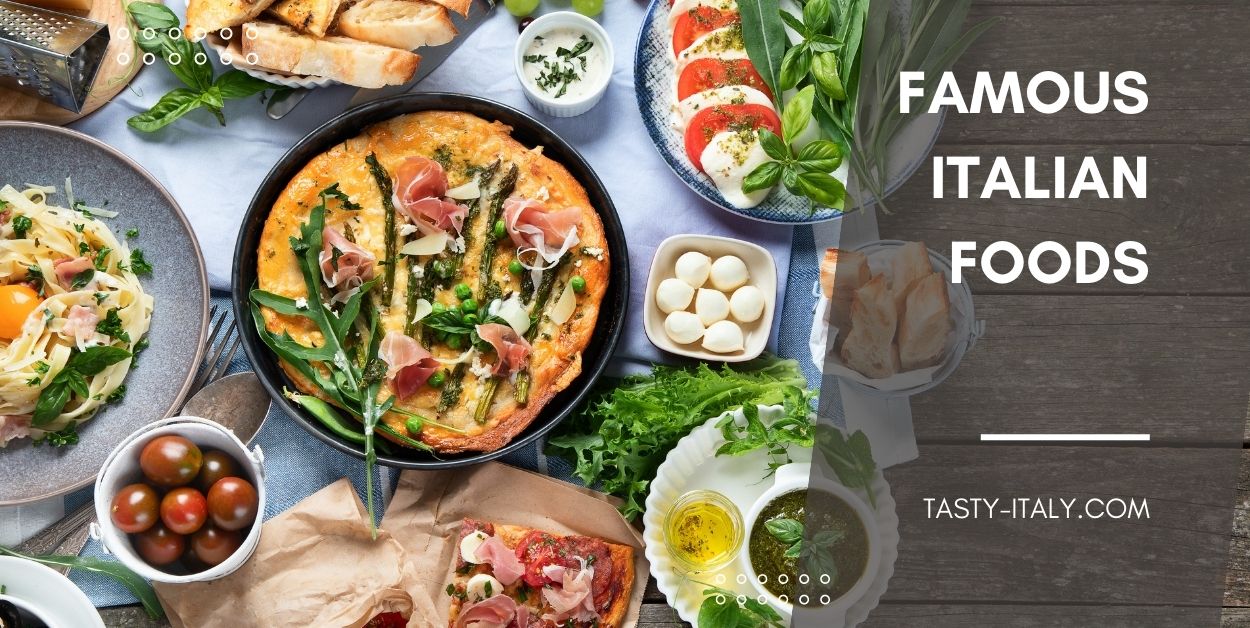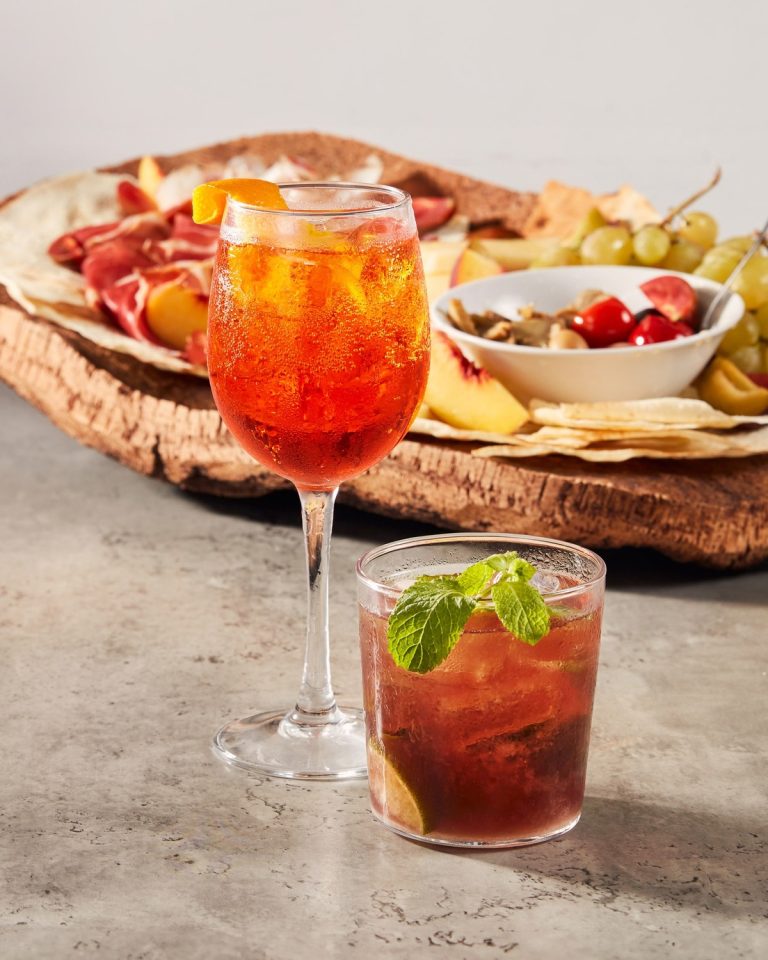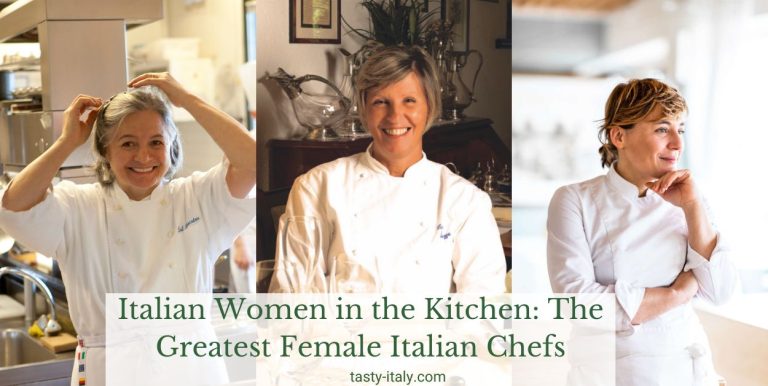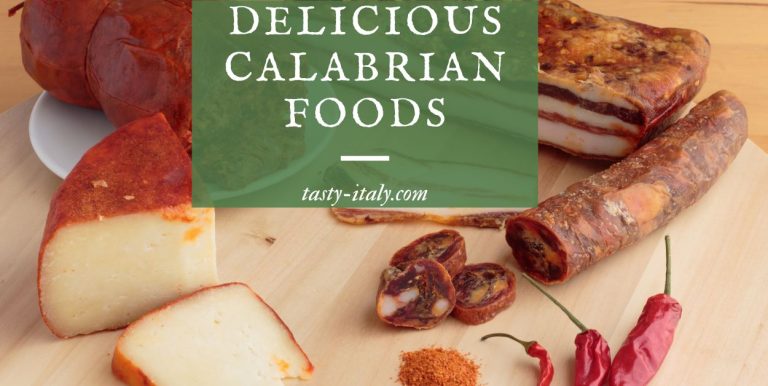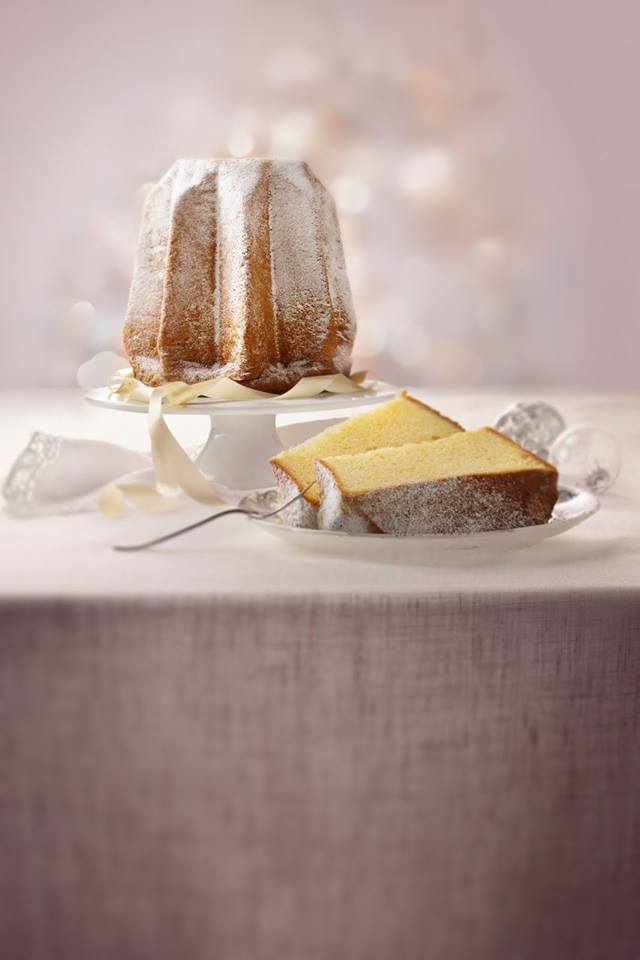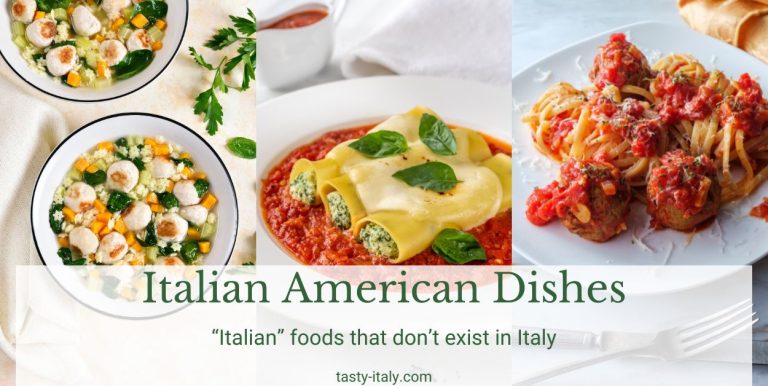Top 15 Most Famous Italian Foods
Food is a central part of the Italian culture. Sitting together at the table for meals is an important bonding moment for family and friends. Picking and cooking only the freshest and highest quality ingredients is not only key to Italian cuisine, but it is a cooking standard in the culture for all. Across the many regions of Italy, cultural foods differ slightly and greatly. What dishes and ingredients are the most prized among Italian traditions of cuisine?
Appetizers
Focaccia

Perfect for panini, pizza crust, breakfast, or a simple side dish, the next Italian food is focaccia. This thin bread is flattened during the leavening process, producing a thin but fluffy bread. The region of Liguria has claimed focaccia as one of its specialties, even though it is loved and enjoyed in cuisines from all around the country. One of the most popular variations on this bread is known as focaccia genovese (focaccia from Genova [Genoa]) and is made by dimpling the bread by hand with small holes during the leavening process and then flavored with salt and olive oil. Another favorite variation includes rosemary, focaccia al rosmarino.
Prosciutto
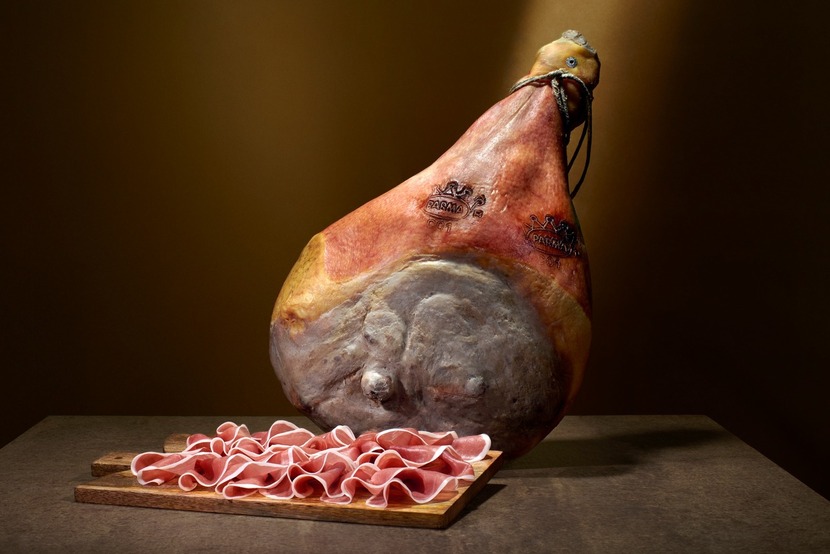
In English, we call it prosciutto. But to an Italian, you will need to be more specific. Prosciutto best translates as “ham” in English. In an Italian restaurant or supermarket, you will find that prosciutto is specified as either crudo (raw) or cotto (cooked). Prosciutto cotto tastes like a slice of deli ham and is delicious in a panino. Prosciutto crudo, is a cured salami made from the same cut of pig as cotto. When an English speaker imagines prosciutto, they are likely thinking of prosciutto crudo. Prosciutto is delicious no matter which way it is enjoyed. You can eat it plain on a charcuterie board, stick it in a sandwich, or place it on top of a pizza. With a sweeter variation of prosciutto crudo, it is popular to enjoy paired with cantaloupe (prosciutto e melone).
Cheese
Italy is famous for its cheeses. Some of the most internationally renowned cheeses include Parmigiano- Reggiano, pecorino, and mozzarella.
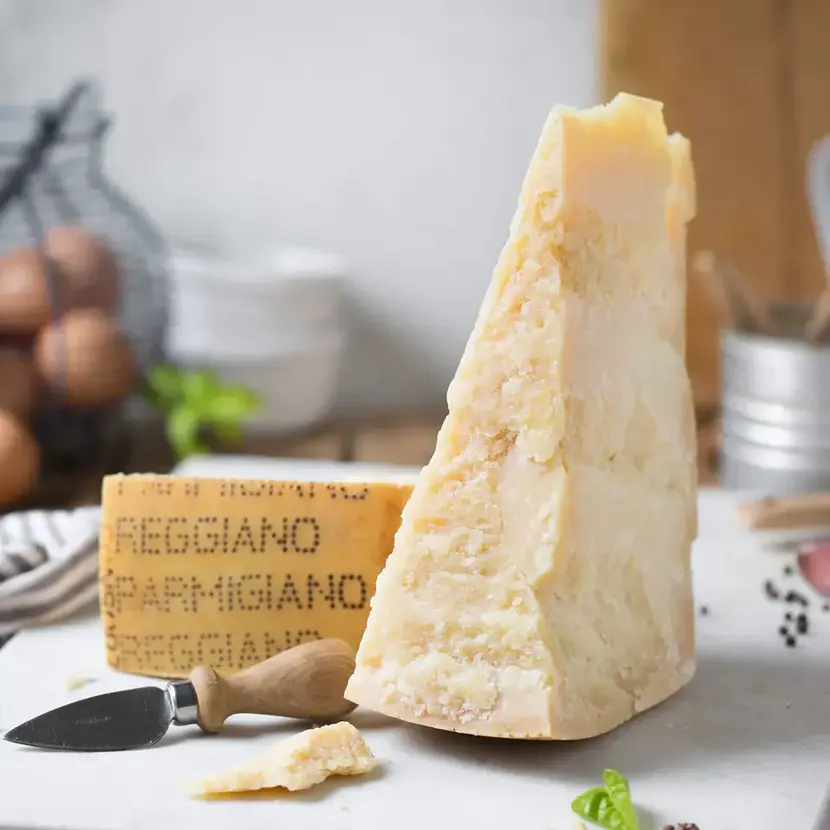
Parmigiano-Reggiano, coming from the areas surrounding Parma and Reggio Emilia. When this specific type of cheese is produced outside of this defined area, the cheese is simply called parmesan. Either way, it is a naturally lactose-free hard cheese made from cow’s milk. It is a favorite for breads, topping pastas, or cut and eaten straight off the wheel because of its firm texture and strong flavor.
Pecorino is simply any cheese made from sheep. Pecorino romano is one of the most popular types. Sheep cheese has a sharp flavor and is a favorite alternative to parmesan (or in addition to parmesan) in almost all the same recipes.
Mozzarella is a delicious semi-soft cheese that is perfect for eating cold like on a caprese salad (more on caprese later), or warmed and gooey like on a pizza. Traditionally, mozzarella is made with buffalo milk (mozzarella di bufala), although nowadays and internationally, it is more often made with cow’s milk.
Caprese
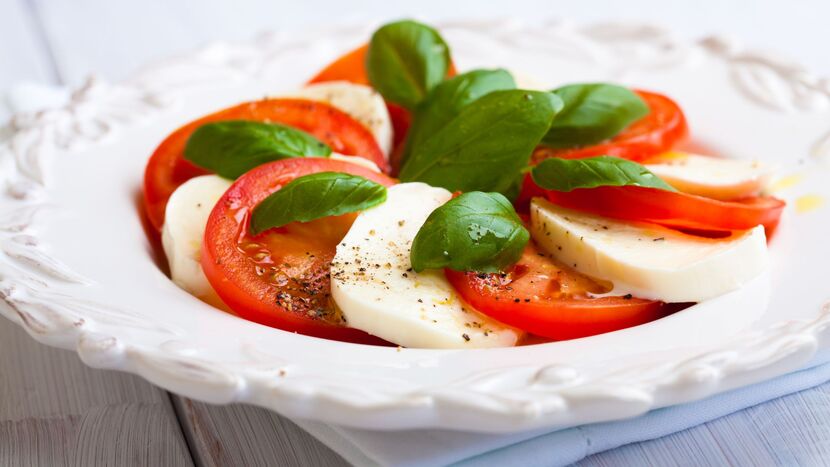
Tomato, mozzarella, and basil. Red, white, and green. This patriotic tri-colored salad boasts the three beloved colors of the Italian flag, all while using three of Italian’s most beloved ingredients. The salad, originating from the island of Capri (the word caprese literally meaning “from or relating to Capri”), is made by alternating slices of red tomato and white mozzarella on a plate, topped with fresh leaves of green basil. It is a delicious summer favorite because of its freshness, simplicity and the fact that no stoves or ovens are used in the preparation of this chilled dish – so no need to make your kitchen extra warm on a hot summer day.
Main Dishes
Pizza
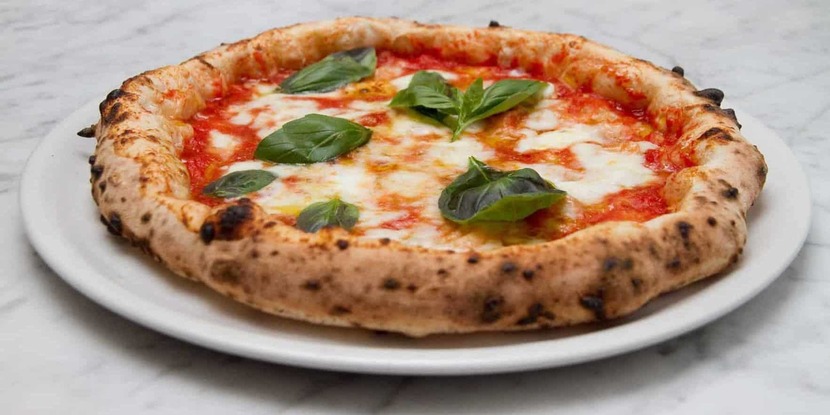
Baked in a wood-fired oven at 800°F or higher, pizza is another favorite Italian dish. In this author’s humble opinion, the pizza from Naples (Napoli) is best. But every region in Italy has their own way to make pizza, much like the many regional versions of pizza in the United States. In the United States, we have Chicago dep-dish and New York fold-up pizzas. In Italy, there is the classic Neopolitan pizza and the Roman pizza al taglio cooked on a focaccia-style crust. Also similar to American pizza, there are many ways to top an Italian pizza. One of the most simple yet still most popular versions is the margherita: basil, mozzarella, and tomato – the red, white, and green tricolors of the Italian flag.
Pasta
Pasta. This very vague word might be the food group most associated with Italian cuisine. Pasta comes in more than 300 varieties and shapes with equally as many sauce and topping options. Let’s discuss, then, some of the most celebrated pasta shapes, sauces, and dishes known across the globe.
Gnocchi (pronounce nyoh-key) is a type of pasta made with potatoes and shaped like a tiny dumpling. Foodies often argue whether gnocchi are pasta or dumplings – they can discuss the matter further at a later day. For now, I shall consider gnocchi to be a pasta for simplicity’s sake.
Lasagna (or in the more commonly used Italian plural, lasagne) is a baked pasta dish using long and wide noodles of the same name. The pasta is then layered in a casserole dish between ragù (more on ragù later) or a vegetarian alternative sauce, and topped with cheese.
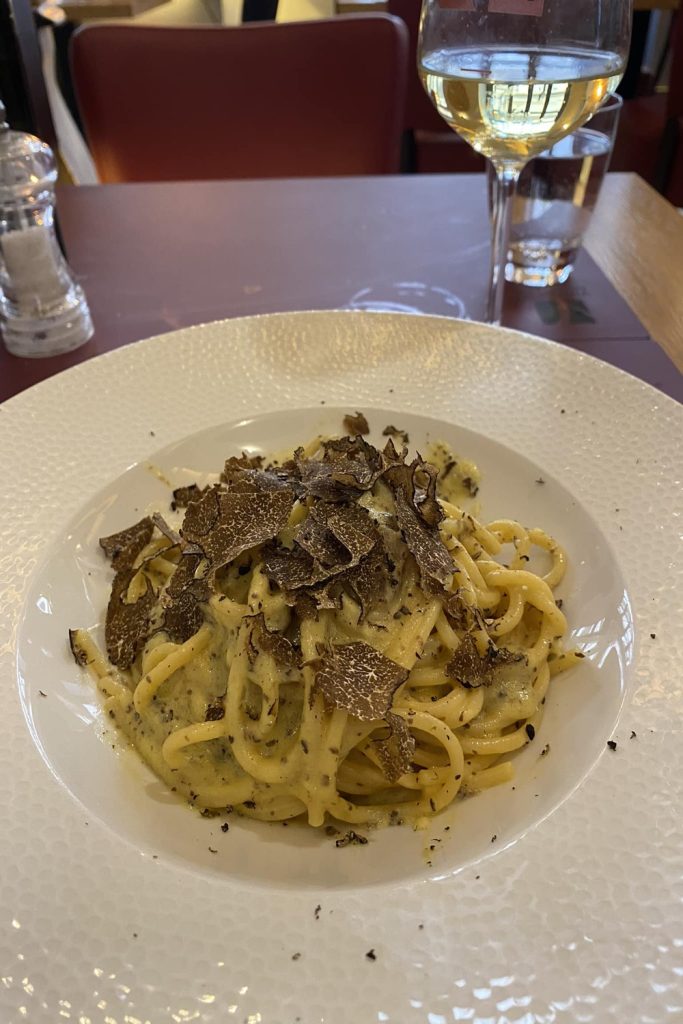
Carbonara is a popular pasta sauce made with egg, pecorino romano, black pepper, and guanciale (pork cheek). The dish is super simple in ingredients, but surprisingly difficult to master its preparation. The cooking of the egg to create a creamy sauce requires precision atop the stove. A sort of sister pasta to the carbonara is cacio e pepe. If you are craving a genuinely Italian version of macaroni and cheese, consider a plate of cacio e pepe. Cacio means “pecorino cheese” in the roman dialect, e pepe means “and pepper”, so this dish is quite simply: cheese and pepper. Both pastas are believed to originate from the Roman area and are typically served with spaghetti noodles.
One supposed Italian dish that is beloved around the world is “Spaghetti Bolognese“. I am sorry to inform you that this dish does not actually exist. But, if it is the taste you are looking for, you may appreciate tagliatelle con ragù alla bolognese. Ragù is a type of meat sauce made that is used in many other dishes, such as arancini or lasagne. One of the best variations of ragù comes from the city of Bologna, which leads to the name ragù alla bolognese (meat sauce made in the Bologna style). It is most often served with a type of pasta noodle called tagliatelle.
A final pasta favorite is pesto. Pesto was arguably perfected in Genoa (Genova), and is made by mortar and pestle. The basic ingredients used are basil, pine nuts, olive oil, and salt, although many choose to also include parmesan or pecorino and garlic in the sauce.
Risotto
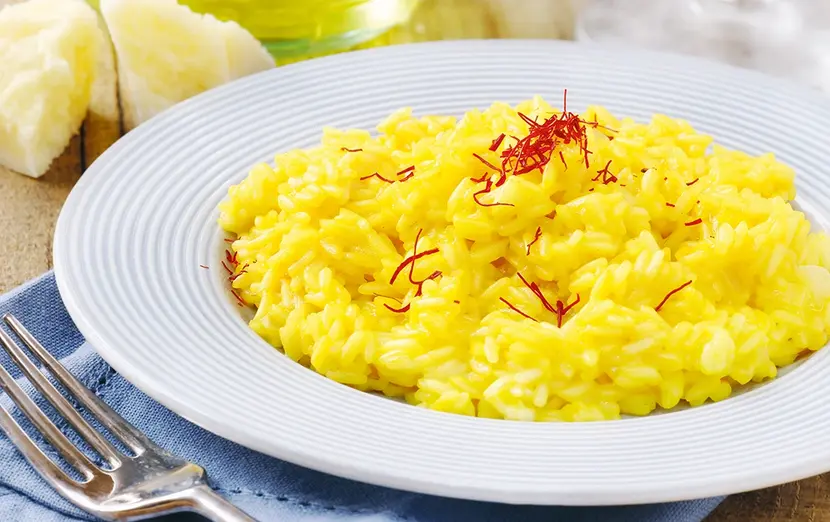
Rice is a popular commodity grown all across the country of Italy. However, in the northern part of the country, specifically in the region of Lombardy (Lombardia), Italians have discovered a way to make rice the basis of a scrumptiously creamy entrée. Risotto is made by slowly cooking rice in warmed broth.
Depending on flavor preferences, many people will also cook with flavorful ingredients such as onion, butter, olive oil, or white wine. Many varieties of risotto will include seasonal vegetables, cheeses, or sometimes seafood. The most famous variation is called risotto alla milanese (risotto made in the Milan style) and includes beef broth, lard or butter, and colorful and flavorful saffron.
Polenta
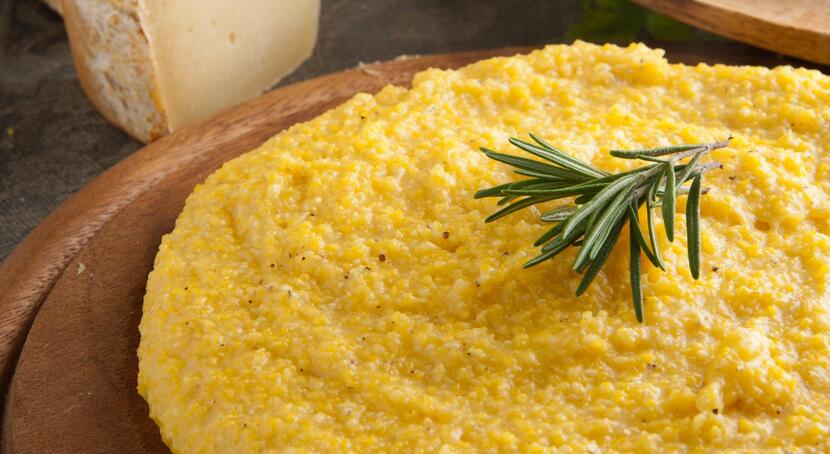
Another northern favorite is polenta. It is a dish made of corn flour, and can be cooked into a smooth mashed potato-like texture, or formed into shapes and baked or fried. The concept of polenta comes from ancient times and was a staple food for peasants’ nutrition. However, back then, polenta was made out of other grains like farro or chickpeas up until corn was introduced to Italy from the Americas in the 1500s.
Arancini
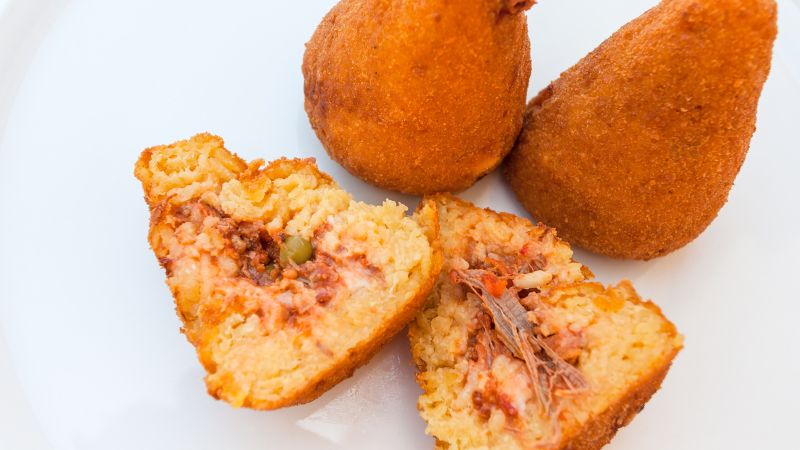
Down south, Italians have a different way to cook with rice. Using cooked and seasoned rice, an arancino is made by rolling the rice into a ball, coating it with bread crumbs, and frying it in oil. Depending on regional preference, arancini are typically filled with either ragù (a meat sauce), cheese, or peas – or any combination of the above. This dish originated in Sicily during a time when the island was under the control of the Arabs, but has since spread out around the country. Now most regions across Italy have their own preferred way to prepare arancini.
Desserts
Gelato
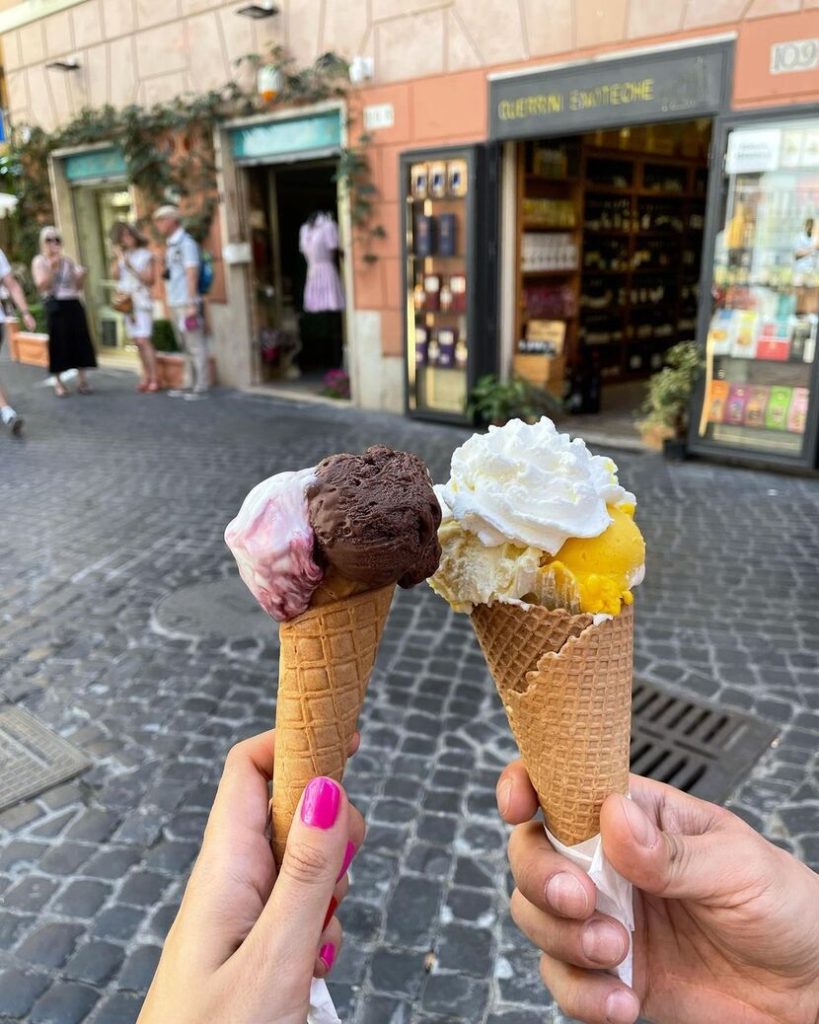
Ice cream is a must on a hot summer’s day. In Italy, ice cream is called gelato. It should be noted, however, that even though the Italian translation of “ice cream” is gelato, gelato and ice cream are not the same thing. The two frozen treats are made out of different ingredients, churned at different velocities, and kept at different temperatures. This creates an entirely different flavor, texture, and density. Italian gelato is more dense and smooth, and typically far more flavorful. The most popular gelato flavors are chocolate, cream, pistachio, hazelnut, strawberry, and lemon.
Tiramisù

Tiramisù quite literally translates to “pick me up” and that is exactly what this dessert is: a little pick-me- up at the end of a long day. This treat is made by layering a mascarpone-based cream and coffee (or coffee liquor) dipped cookies. At the end, the treat is sprinkled with a generous dusting of cocoa powder. This rich dessert comes from the region of Veneto and has become an absolute favorite for tourists.
Cannoli
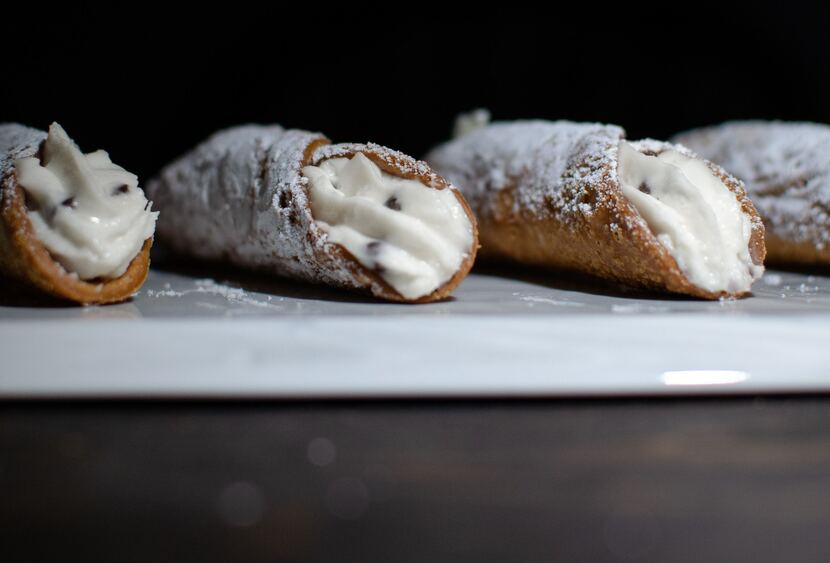
Another dessert favorite comes from the island of Sicily (Sicilia). Cannoli (or singular cannolo) are tube- shaped pastries filled with sweet ricotta cheese. The ends are then dipped and garnished with something special like pistachio, chocolate chips, or candied fruits. This treat can be enjoyed as a post- dinner dessert, mid-day snack, or even as breakfast!
Read also: Italian Desserts
Drinks
Spritz
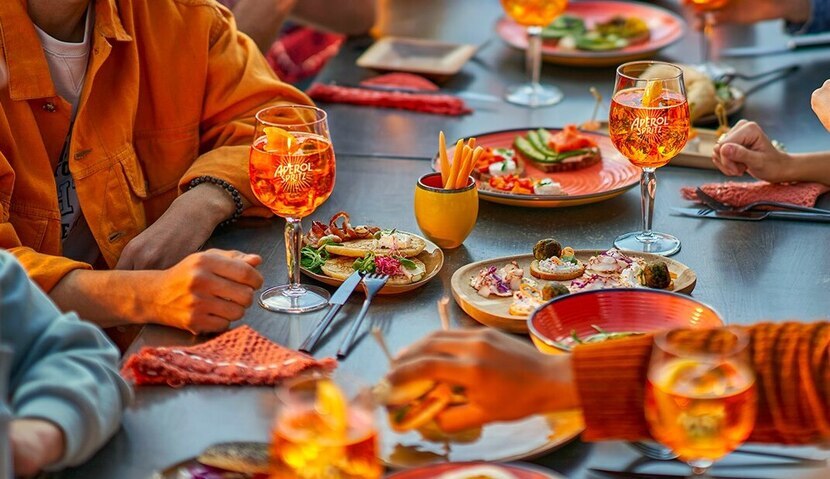
Before dinner, many Italians like to open up their appetites with an aperitivo. A common aperitif beverage is the Spritz, which comes from the same region (Veneto) as tiramisù. This pre-dinner cocktail consists of 3 parts prosecco (more on that later), 2 parts of a bitter liquor, and 1 part club soda or fizzy water, then garnished with a slice of orange. Typically, one of three liquors are used as the bitter: Aperol, Select, or Campari. This beverage has a bitter orange taste, but is extremely appetizing and refreshing at the end of the day.
Wine

No drinks accompanies a good pasta better than a glass of wine. Italy is known for its wine production, and is one of the world’s biggest wine producers. Grapes are grown and wine is produced in every single region of Italy.
One of the most famous wine producers comes from the region of Tuscany (Toscana) in a section of land called Chianti. The red Chianti wine is grown only in a determined area of fields located between the cities of Siena and Florence (Firenze).
Another favorite type of wine is prosecco, a white wine that is typically made sparkling or semi-sparkling. Prosecco is grown and produced in the northeastern regions of the country.
Limoncello
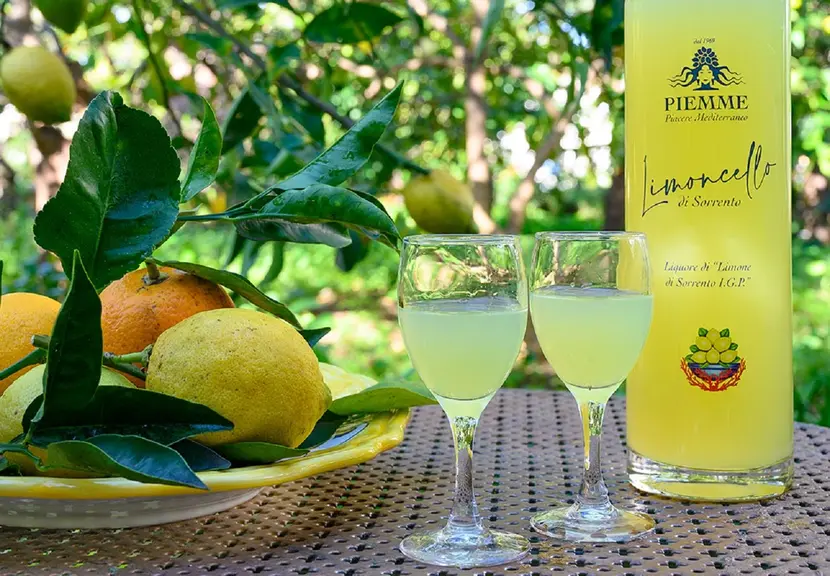
After dinner, a digestif may help with the process of digestion. The most popular digestif in Italy (and second-most popular liquor in general) is limoncello. This brightly colored lemon drink is made from, no surprise here, lemons. It is produced primarily in Naples, along the Amalfi Coast, and on the island of Sicily. This beverage is produced commercially, but it is also fairly common to make limoncello in your own home in the southern portions of the country where lemons grow best.

